baltic sea
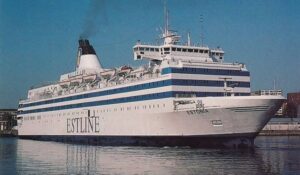
 I love to ride on the Ferry boats in Washington state. It’s especially cool to have your car right there with you at the end of your journey. You just get in and go off to the rest of your adventure. Of course, a Ferry boat is just that…a boat, and that always leaves the possibility of one sinking. That has happened on numerous occasions. It seems to me though that most of the time when they sink, it is in open waters, and not the inland waters, such as the Puget Sound.
I love to ride on the Ferry boats in Washington state. It’s especially cool to have your car right there with you at the end of your journey. You just get in and go off to the rest of your adventure. Of course, a Ferry boat is just that…a boat, and that always leaves the possibility of one sinking. That has happened on numerous occasions. It seems to me though that most of the time when they sink, it is in open waters, and not the inland waters, such as the Puget Sound.
One such maritime disaster in open waters, occurred on September 28, 1994, when a large car-and-passenger ferry…MS Estonia, sank in the Baltic Sea, killing 852 people. MS Estonia was a cruiseferry built in 1980 at the West German shipyard Meyer Werft in Papenburg. The ship was sold to Nordström and Thulin in 1993, for use on Estline’s Tallinn–Stockholm route. Estonia departed slightly behind schedule that night, departing at at 7:15pm on September 27. It was expected in Stockholm the next morning at about 9:00am. The ship was carrying 989 people, which included 803 passengers and 186 crew. The seas were rough that night, and it was determined by a 1997 investigation, that the ship’s bow door locks had failed during the storm. However, new underwater footage appears to show a previously unrecorded 13-foot hole in the ship’s hull. Given that information, many people think that it might have been a Russian torpedo that took down the MS Estonia. Whatever the case may be, the sinking of Estonia was one of the worst maritime disasters of the 20th century.
The main reason for the new theory is that Estonia was traveling on an overnight cruise from Tallinn, the capital city of Estonia, to Stockholm, Sweden, when it sank off the coast of Finland. Estonia is a former Soviet republic that gained its independence in 1991, but the last Russian troops actually left in 1994. Tallinn was a popular and affordable travel destination for Swedes. The Estonia was a type of ferry known as a “ro-ro,” which featured a smorgasbord, live music, dancing and drinking, and allowed people to drive vehicles onto one end of the ship and drive off on the other end.
There is no doubt that the stormy weather played a part in the disaster, because in the storm, the waves reached an estimated 15 to 20 feet. The Estonia went down in the middle of the night. It went down so quickly, that many passengers were trapped inside the ship. Some were able to escape and managed to make it into lifeboats. Some of those later drowned in the frigid water or died from hypothermia. Out of the 989 souls on board Estonia, only 137 survived, most of those were rescued by helicopters.
Officially, a joint Swedish-Finnish-Estonian government committee ruled it an accident and blamed it on stormy 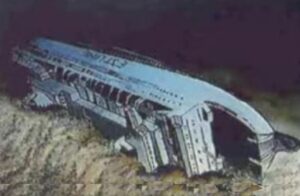
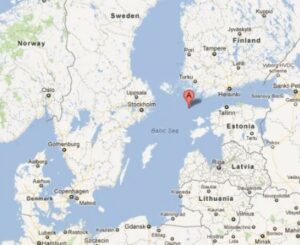 weather that caused water to pour through an open bow door and into the Estonia’s car deck, destabilizing the ship and capsizing it in less than an hour. Nevertheless, there were others, including some family and friends of the Estonia victims, who believed the sinking was the result of a pre-existing hole caused by a collision or explosion. I don’t suppose that the full truth will ever be known, but the loss of life will forever be felt.
weather that caused water to pour through an open bow door and into the Estonia’s car deck, destabilizing the ship and capsizing it in less than an hour. Nevertheless, there were others, including some family and friends of the Estonia victims, who believed the sinking was the result of a pre-existing hole caused by a collision or explosion. I don’t suppose that the full truth will ever be known, but the loss of life will forever be felt.
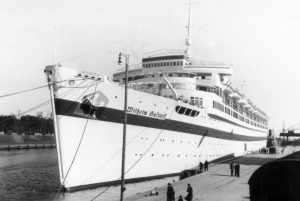 When we think of disasters at sea, Titanic is the first ship that most likely comes to mind, and while Titanic was a terrible tragedy, it was not the worst disaster at sea, by any means. It is amazing to me, however, that some of the others are never talked about at all, and in fact, you may have never heard about them. Titanic had a capacity of 3547 people, but was only carrying 2223 with passengers and crew. The loss of more than 1500 lives, was horrific to be sure, but it was not the worst disaster at sea in history. That distinction goes to The Wilhelm Gustloff.
When we think of disasters at sea, Titanic is the first ship that most likely comes to mind, and while Titanic was a terrible tragedy, it was not the worst disaster at sea, by any means. It is amazing to me, however, that some of the others are never talked about at all, and in fact, you may have never heard about them. Titanic had a capacity of 3547 people, but was only carrying 2223 with passengers and crew. The loss of more than 1500 lives, was horrific to be sure, but it was not the worst disaster at sea in history. That distinction goes to The Wilhelm Gustloff.
The Wilhelm Gustloff was built by the Blohm & Voss shipyards. It measured 684 feet 1 inch long by 77 feet 5 inches wide with a capacity of 25,484 gross register tons. The ship was launched on 5 May 1937. Originally the ship was intended to be named Adolf Hitler, but was named after Wilhelm Gustloff, a leader of the National Socialist Party’s Swiss branch, who had been assassinated by a Jewish medical student in 1936. Hitler decided on the name change after sitting next to Gustloff’s widow during his memorial service. I guess Hitler managed to do a few nice things in his horrid lifetime. The ship was the first purpose-built cruise liner for the German Labour Front or Deutsche Arbeitsfront, 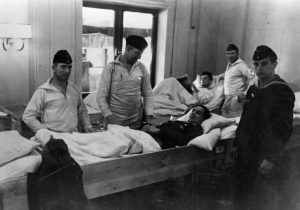 DAF and used by subsidiary organization Kraft durch Freude, KdF meaning Strength Through Joy. The purpose of the ship was to provide recreational and cultural activities for German functionaries and workers, including concerts, cruises, and other holiday trips, and as a public relations tool, to present “a more acceptable image of the Third Reich.” She was the flagship of the KdF cruise fleet, her last civilian role, until the spring of 1939.
DAF and used by subsidiary organization Kraft durch Freude, KdF meaning Strength Through Joy. The purpose of the ship was to provide recreational and cultural activities for German functionaries and workers, including concerts, cruises, and other holiday trips, and as a public relations tool, to present “a more acceptable image of the Third Reich.” She was the flagship of the KdF cruise fleet, her last civilian role, until the spring of 1939.
The Wilhelm Gustloff became a German hospital ship from September 1939 to November 1940, with its official designation being Lazarettschiff. Then, beginning on 20 November 1940, the medical equipment was removed from the ship and she was repainted from the hospital ship colors of white with a green stripe to standard naval grey. As a consequence of the British blockade of the German coastline, she was used as a barracks ship for approximately 1,000 U-boat trainees of the 2nd Submarine Training Division in the port of Gdynia, which had been occupied by Germany and renamed Gotenhafen. The ship was based near Danzig. Then, as things started to go from bad to worse during World War II, the Germans decided that they needed to evacuate as many people as possible from Courland, East Prussia and Danzig, West Prussia. On  January 30, 1945 during Operation Hannibal, which was the naval evacuation of German troops and civilians from Courland, East Prussia, and Danzig, West Prussia as the Soviet Army advanced. The Wilhelm Gustloff’s final voyage was to evacuate German refugees and military personnel as well as technicians who worked at advanced weapon bases in the Baltic from Gdynia, then known to the Germans as Gotenhafen, to Kiel. The ship’s capacity was 1465, but because they were evacuating people, about 9,400 people were onboard. The ship was hit by a torpedo from Soviet submarine S-13 in the Baltic Sea. It quickly sank, taking all 9,400 people with it. The loss of the Wilhelm Gustloff remains the worst disaster at sea in history.
January 30, 1945 during Operation Hannibal, which was the naval evacuation of German troops and civilians from Courland, East Prussia, and Danzig, West Prussia as the Soviet Army advanced. The Wilhelm Gustloff’s final voyage was to evacuate German refugees and military personnel as well as technicians who worked at advanced weapon bases in the Baltic from Gdynia, then known to the Germans as Gotenhafen, to Kiel. The ship’s capacity was 1465, but because they were evacuating people, about 9,400 people were onboard. The ship was hit by a torpedo from Soviet submarine S-13 in the Baltic Sea. It quickly sank, taking all 9,400 people with it. The loss of the Wilhelm Gustloff remains the worst disaster at sea in history.

